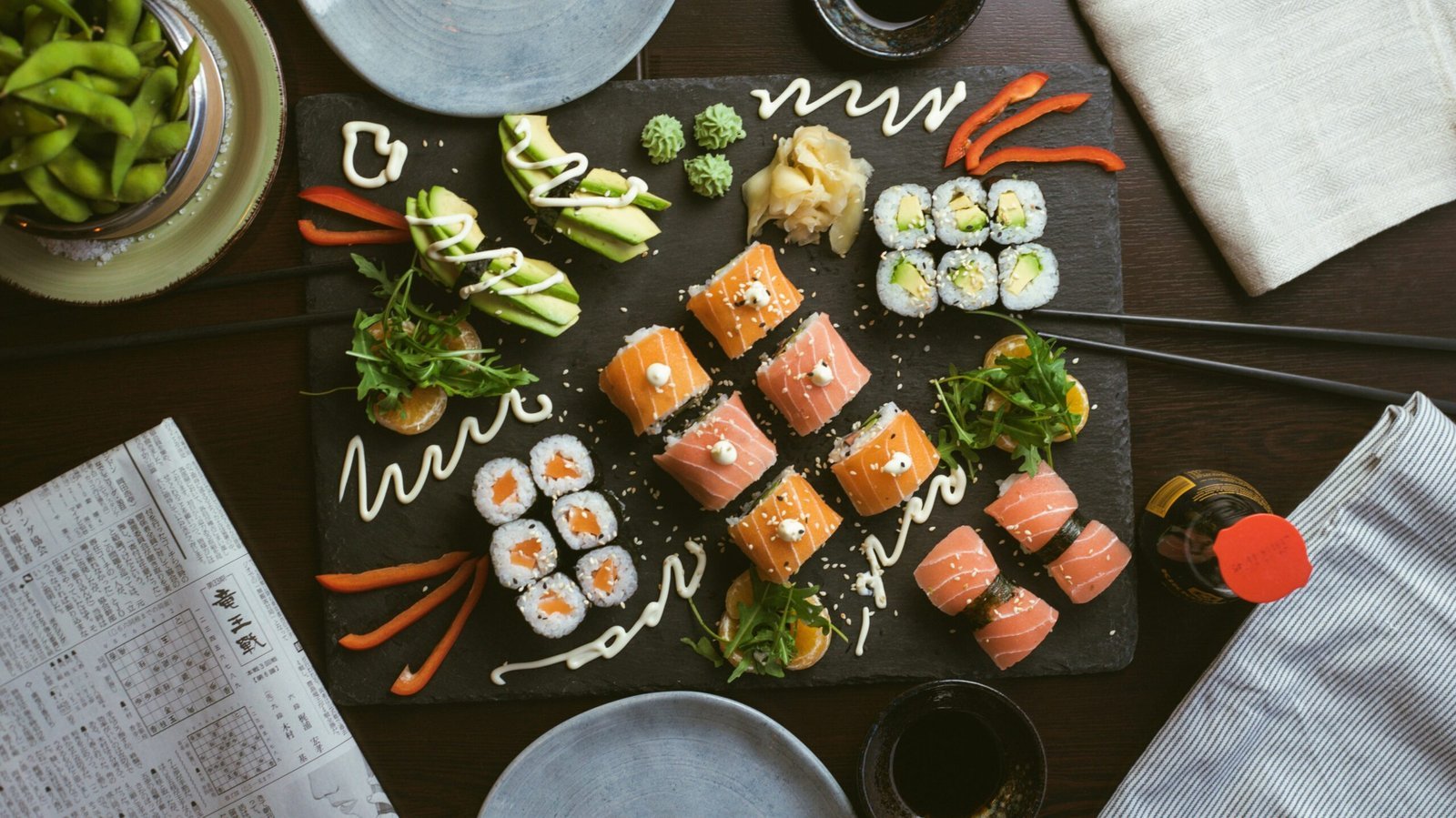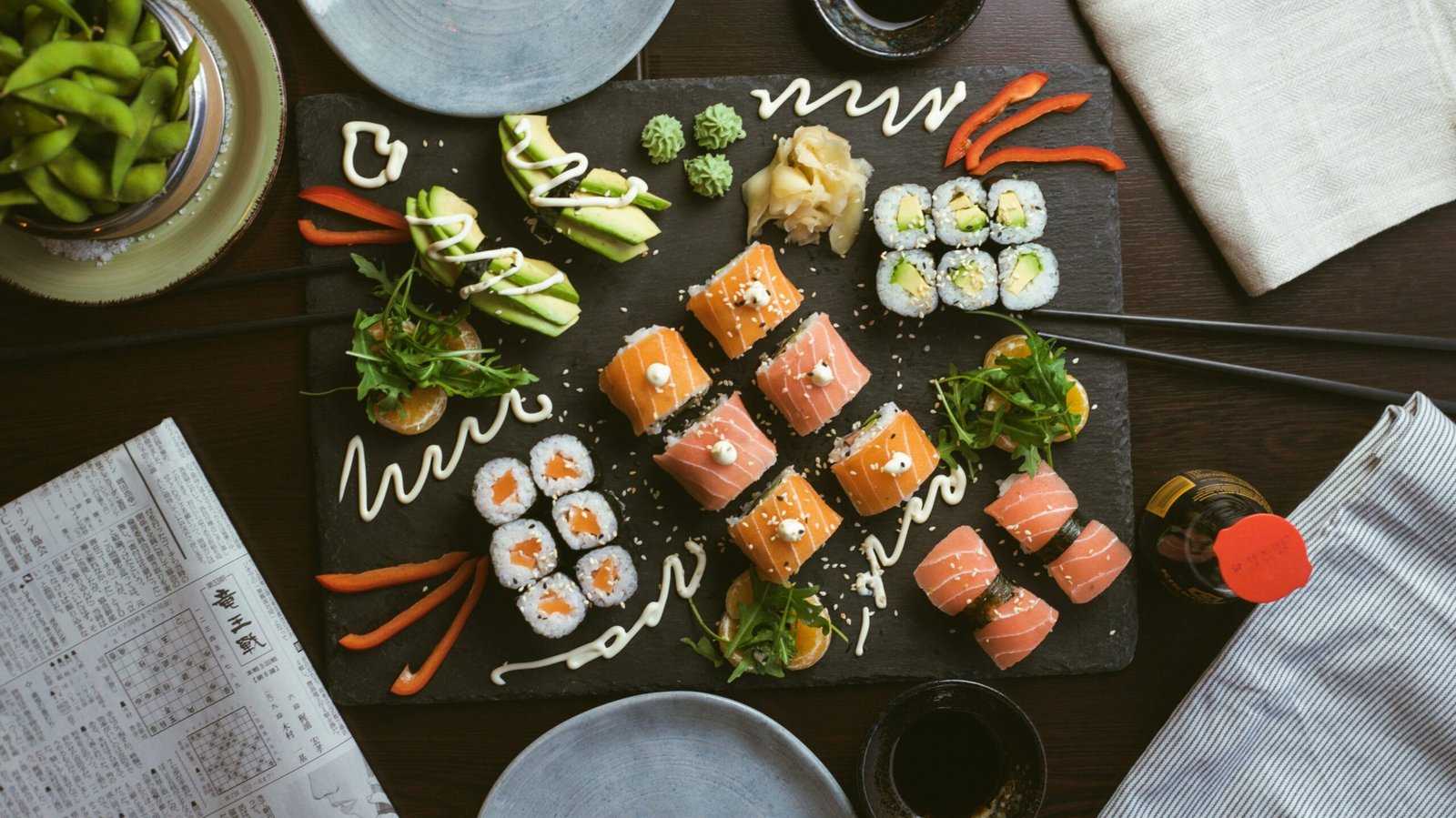
Introduction to East Timor’s Culinary Landscape
East Timor, an island nation situated in Southeast Asia, presents a rich tapestry of culinary traditions shaped by its diverse cultures and historical influences. The gastronomy of East Timor is a delightful blend of indigenous practices and flavors, interlaced with Portuguese heritage from centuries of colonial rule, as well as elements from neighboring Indonesia and Australia. This fusion has resulted in a vibrant culinary scene that celebrates the use of fresh, local ingredients and traditional cooking methods.
The cornerstone of East Timorese cuisine is its reliance on locally sourced produce, where staples such as rice, corn, and cassava play a vital role. The nation’s fertile lands yield a multitude of fruits and vegetables, including bananas, papayas, and leafy greens that are often incorporated into daily meals. Alongside these, East Timor boasts an extensive array of seafood, reflecting its geographical wealth, with fish being a crucial protein source for many households. Grilled and stewed seafood dishes, flavored with coconut and local spices, exemplify the region’s bountiful maritime offerings.
Traditional cooking techniques remain pivotal in East Timorese kitchens, with methods such as grilling over open flames, simmering in clay pots, and steaming being commonly employed. Dishes are often seasoned with locally grown herbs and spices, which infuse flavors that are distinctly East Timorese. Furthermore, community gatherings and celebrations frequently feature local delicacies, fostering a culture of sharing and appreciation for food. As the country continues to grow and evolve, newer influences are emerging while still honoring its culinary past, ensuring that the tastes of East Timor remain both authentic and dynamic.
Must-Try Classic Dishes of East Timor
East Timor, a small island nation in Southeast Asia, boasts a rich culinary heritage reflective of its diverse culture and history. The classic dishes of East Timor highlight fresh local ingredients and traditional preparation methods, making dining an authentic experience. Among the must-try dishes is batar da’an, a hearty corn and pumpkin stew enriched with a mixture of spices, including turmeric and garlic. This dish epitomizes the traditional rural diet and is often enjoyed during communal gatherings, symbolizing unity and togetherness.
Another staple is ikan bakar, or grilled fish, which showcases East Timor’s access to fresh seafood. The fish, typically marinated with a blend of local herbs such as coriander and chili, is grilled to perfection, resulting in a smoky flavor that is both savory and aromatic. This dish is commonly served with rice and a side of vegetables, exemplifying the East Timorese commitment to simple yet flavorful meals.
Chamur beef is a classic meat dish prepared from tender cuts of beef slowly cooked with various spices, including bay leaves and lemongrass. The long cooking method permits the flavors to meld, creating a rich, savory profile that resonates deeply with locals. Often served during festive occasions, chamur beef signifies appreciation for culinary artistry and tradition.
One cannot overlook the significance of arroz doce, a sweet rice dessert often flavored with coconut and cinnamon. This dish provides a pleasant ending to any meal, symbolizing warmth and hospitality often found in East Timorese culture.
These quintessential dishes not only satisfy the palate but also tell a story rich in history, culture, and community, offering visitors an insight into East Timor’s culinary landscape. Each bite captures the essence of the country’s traditions, making them essential experiences for anyone looking to savor East Timor’s unique flavors.
Modern Twists: Creative Restaurants Redefining Local Cuisine
East Timor’s culinary landscape is experiencing a delightful transformation, with several restaurants at the forefront of this movement, reimagining traditional dishes using contemporary techniques and innovative presentations. Chefs across the region are embracing local ingredients while experimenting with flavors and cooking methods that breathe new life into classic East Timorese cuisine.
One of the notable dining establishments leading this charge is O Globo, located in the heart of Dili. Here, the chefs pay homage to traditional recipes by incorporating elements of modern gastronomy. Diners can enjoy dishes like ikan bakar (grilled fish) with an inventive twist, such as a tamarind glaze and local herb-infused sides. This blend of old and new not only pleases the palate but also showcases the vibrancy of East Timor’s culinary heritage.
Another prominent player is Restaurant Tais, where the chefs create a fusion menu that bridges traditional exchanges with international influences. For example, the popular dish of batar da’an—a pumpkin and corn stew—has been revitalized with the addition of aromatic spices and garnished with microgreens, presenting both a visual and gastronomical delight. This restaurant emphasizes sustainability, sourcing its ingredients directly from local farmers and fishermen, which supports the community while ensuring freshness.
Additionally, Aruna Timor is transforming the way diners perceive local food by utilizing modern plating techniques that elevate traditional East Timorese staples. Their reinvented beef rendang, slow-cooked to perfection, is elegantly served alongside wild rice and seasonal vegetables, combining rustic flavors with sophisticated styles. This focus on creative presentations helps highlight the beauty of local ingredients while encouraging a deeper appreciation of East Timor’s culinary roots.
These innovative restaurants are not only redefining the dining experience in East Timor, but they also reflect a growing movement among chefs who respect tradition while pushing culinary boundaries. As more establishments adopt this ethos, the future of East Timorese cuisine appears both exciting and delicious.
Top Recommended Restaurants Around Dili
Dili, the capital city of East Timor, is a vibrant hub of culinary diversity, boasting a variety of restaurants that provide an exceptional dining experience. For those seeking classic flavors, local favorites such as the Timor Plaza Restaurant offer traditional dishes that emphasize the island’s unique ingredients. Known for its relaxed ambiance, this restaurant serves signature dishes like grilled fish marinated with local spices, making it a must-visit for both locals and tourists.
For a modern twist, O Sol Restaurant stands out with its innovative cuisine. This establishment focuses on fusion dishes that blend Timorese flavors with international influences. Patrons can enjoy dishes like coconut cream pasta with fresh seafood, all while relaxing on the restaurant’s terrace that overlooks the ocean. The vibrant setting enhances the overall dining experience, drawing in a crowd of both expatriates and locals keen to enjoy their culinary delights.
Casa Portuguesa is another top recommendation, known for its traditional Portuguese cuisine, reflective of the country’s colonial ties to East Timor. The restaurant specializes in dishes like bacalhau à brás (Portuguese cod) and offers an extensive wine list. The cozy yet upscale atmosphere invites diners for a leisurely meal, often noted for its impeccable service and intimate setting.
In addition, Azzura Restaurant is a popular choice for tourists, known for its seafood specialties. The vibrant decor and friendly staff create a welcoming atmosphere, encouraging diners to savor delights such as grilled prawns and calamari. Customer experiences highlight the attentive service and the restaurant’s dedication to freshness, making it a favorite dining spot for many. Dili’s range of restaurant options ensures that every visitor can find a meal that suits their taste and budget, enriching their overall experience in East Timor.
Hidden Gems: Off-the-Beaten-Path Dining Spots
While East Timor is gaining recognition for its vibrant culinary scene, it is the lesser-known restaurants and cafes that often provide the most memorable dining experiences. These hidden gems are typically favored by locals, offering an authentic taste of the region’s flavors away from the bustling tourist spots. One such establishment is ‘Restaurante Klibur,’ located in the heart of Dili. This quaint restaurant is renowned for its traditional Timorese dishes, prepared with locally sourced ingredients. The intimate atmosphere and warm hospitality make it an ideal spot for visitors looking to immerse themselves in the local culture.
Another notable mention is ‘Café de Papaya,’ a small café tucked away in a serene corner of Bacau. This establishment specializes in artisanal coffee and homemade pastries, creating a cozy ambiance that invites patrons to sit back and enjoy their surroundings. The owner, a passionate coffee aficionado, takes pride in the story behind each blend, ensuring guests not only enjoy the drinks but also the rich history of East Timor’s coffee industry. The café’s charm is rooted in its commitment to sustainability and community, as it regularly features local artisans and hosts cultural events.
Additionally, ‘Tia Maria’s Kitchen’ is a delightful eatery situated just outside of Dili, where visitors can experience true home-cooked meals. The friendly owner, Tia Maria herself, often shares her personal anecdotes about the dishes she prepares, each representing a family recipe passed down through generations. Her inviting personality and the familial atmosphere make this a must-visit for anyone seeking a taste of authentic Timorese cuisine.
These hidden gems not only offer unique offerings and cozy atmospheres but also provide an authentic glimpse into the local way of life in East Timor. By exploring these off-the-beaten-path dining spots, visitors can create cherished memories while supporting the community and discovering the true flavors of this enchanting country.
Vegetarian and Vegan Options in East Timorese Cuisine
As the global trend toward plant-based diets continues to rise, East Timor has not remained untouched. The culinary scene in this Southeast Asian nation is evolving, embracing the growing demand for vegetarian and vegan options. Traditional East Timorese cuisine, known for its rich flavors and fresh ingredients, seamlessly accommodates these dietary preferences through innovative adaptations of classic dishes.
Restaurants across East Timor are increasingly offering diverse menus that cater to vegetarians and vegans, ensuring that diners can enjoy local flavors without compromising their dietary choices. In Dili, the capital city, several eateries stand out for their commitment to plant-based meals. Some establishments creatively reinterpret traditional dishes, such as “batar daan,” a corn porridge that can easily be made vegan by using coconut milk rather than its traditional meat-based variations.
Another popular dish that has seen a vegan twist is the “ikan brudak,” which typically features fish or seafood. Many restaurants now offer a vegetable version, incorporating a medley of local vegetables infused with traditional spices to retain the essence of the original recipe. This flexibility in preparation not only showcases the vibrancy of East Timorese ingredients but also invites those with specific dietary preferences to explore the country’s culinary heritage.
Additionally, markets and street vendors in East Timor often provide a variety of fresh fruits, legumes, and traditional staples that allow for easy and flavorful plant-based meals. Local favorites like “pasta de tofu” (tofu paste) and “labu” (pumpkin) are popular among vegetarians and vegans, providing nutrition and flavor akin to their meat-based counterparts. As the emphasis on health and sustainable eating continues to grow, East Timor is poised to be a burgeoning hub of vegetarian and vegan cuisine, reflecting both its rich cultural heritage and the contemporary dining trends.
Where to Experience Culinary Culture: Cooking Classes and Food Tours
Exploring East Timor’s culinary culture goes beyond savoring dishes at local restaurants. For those eager to engage more deeply, cooking classes and food tours present unique opportunities for hands-on experiences with traditional East Timorese cuisine. These immersive excursions allow visitors to learn about the country’s diverse ingredients, vibrant flavors, and cooking techniques that have been passed down through generations.
Cooking classes are offered by various culinary schools and local chefs who are passionate about sharing their knowledge. Participants can expect to dive into the heart of East Timorean gastronomy, often starting with a trip to local markets. Here, attendees have the chance to select fresh produce and spices, guided by experts who can explain the significance of each ingredient in traditional recipes. Once back in the kitchen, the classes typically focus on preparing staple dishes such as ‘Bife de Timor’ and ‘Ikan Pepes,’ with guidance on authentic methods that reflect the region’s rich cooking heritage.
Food tours are another excellent way to experience the culinary diversity of East Timor. These guided tours take tourists through bustling markets, street food stalls, and local eateries, offering a taste of the nation’s unique cuisine. Participants can sample various dishes while interacting with proud vendors and understanding the cultural context behind each dish. Engaging in a food tour provides insights into daily life in East Timor, highlighting how food plays a central role in community bonding and celebration.
For those seeking an educational and delicious adventure, cooking classes and food tours in East Timor can transform a simple culinary journey into an enriching experience. Immersing oneself in the country’s cuisine through these hands-on activities enriches one’s understanding of East Timor’s cultural identity while appreciating the significance of its culinary arts.
Cultural Etiquette: Dining Customs in East Timor
When dining in East Timor, understanding the local customs and etiquette is essential for an enriching culinary experience. The way one interacts with restaurant staff and fellow diners plays a significant role in how meals are perceived and enjoyed. Greeting staff warmly upon arrival is customary, as it sets a respectful tone for the dining experience. A simple “Olá” (hello) or “Bom dia” (good morning) not only reflects politeness but also shows appreciation for the local culture.
Table manners in East Timor can be quite different compared to Western dining norms. It is common to eat with one’s right hand, particularly when enjoying traditional dishes. The left hand is considered impolite for dining purposes, as it is typically associated with personal hygiene. If utensils are provided, they are usually used for specific dishes, but one should also be prepared to eat using hands, especially at more casual eateries. Offering food to others before serving oneself is not just polite; it also reflects a communal spirit integral to East Timorese culture.
Sharing food is another vital aspect of dining etiquette in East Timor. Meals are often served family-style, and it is customary to pass dishes around the table. This act symbolizes hospitality and a sense of community. When invited to someone’s home or even in a restaurant setting, it is polite to try a little bit of everything offered. Additionally, when declining food, it should be done respectfully to avoid offending the host. Understanding these dining customs highlights the country’s communal atmosphere and the importance of interpersonal connections during meals.
Conclusion: Embracing the Flavors of East Timor
As we reach the end of this culinary exploration, it is clear that East Timor presents a unique gastronomic landscape that deserves recognition and appreciation. The diverse range of traditional dishes, infused with local ingredients and cultural heritage, offers a rich tapestry of flavors that reflect the country’s heritage. From savory seafood dishes to hearty meat preparations, the classic options available in East Timor are truly mouthwatering and illustrative of its vibrant cultural identity.
Moreover, the burgeoning modern cuisine scene has introduced innovative interpretations of traditional recipes, allowing for a fresh take on beloved classics. By embracing both traditional and contemporary dining options, visitors can gain a comprehensive understanding of East Timor’s culinary evolution. This blend of the old and the new not only highlights the creativity of local chefs but also encourages culinary experimentation, significantly enhancing the dining experience.
We encourage readers to delve deeper into the culinary offerings when visiting East Timor. Engage with the local food culture by seeking out not only popular restaurants but also hidden gems that may be off the beaten path. Sampling renowned dishes alongside contemporary creations allows for a holistic understanding of the nation’s diverse flavor profiles and the stories behind them. Every meal in East Timor serves as an opportunity to appreciate the rich history and multifaceted culture that the nation possesses.
Ultimately, savoring the flavors of East Timor is about more than just enjoying food; it is about immersing oneself in the cultural fabric that defines this beautiful country. By experiencing the culinary landscape, one can truly appreciate East Timor’s identity and the warmth of its people. So, as you explore, take the time to celebrate the flavors that await.

